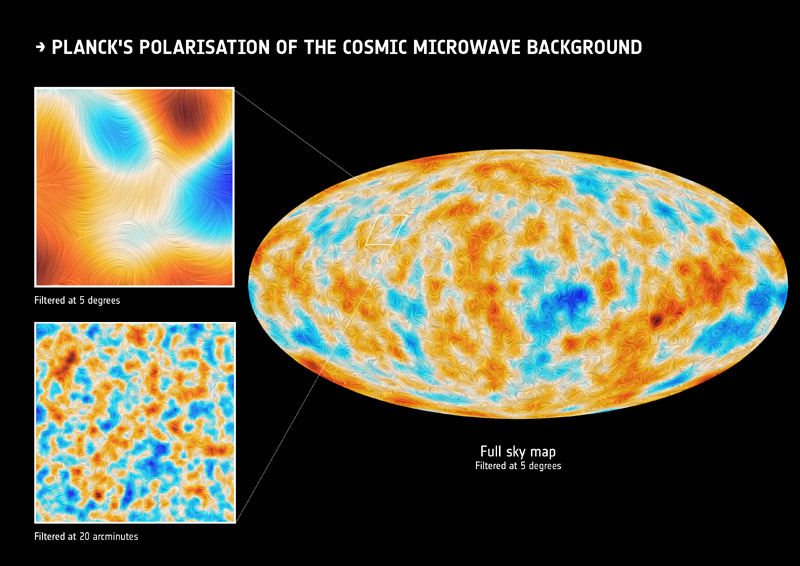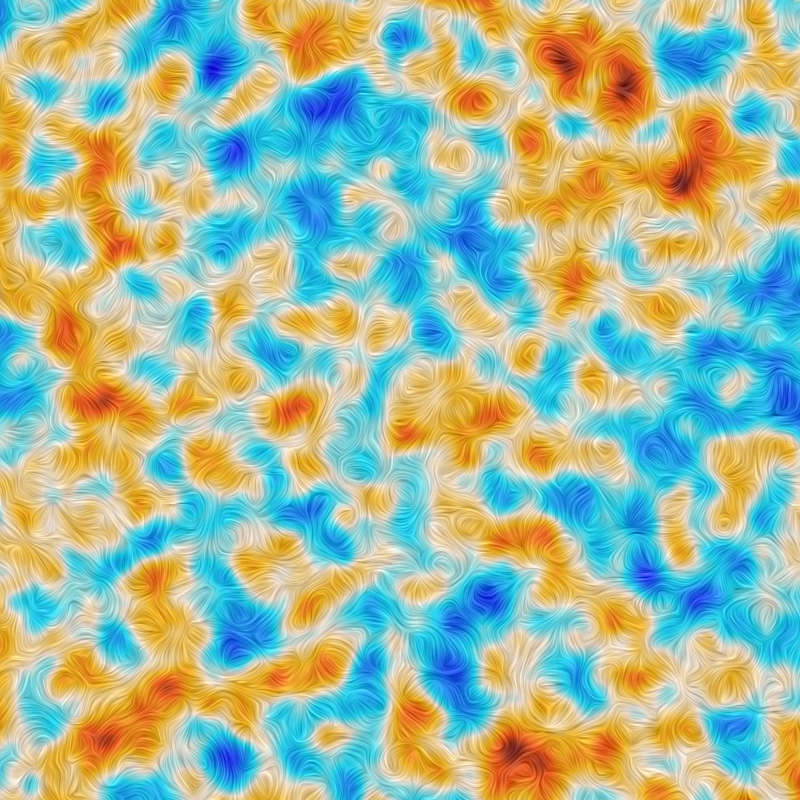PLANCK DELIVERS ITS MEASUREMENTS OF THE COSMIC MICROWAVE BACKGROUND POLARIZATION
After the first batch of announcements made in December 2014 at two colloquia held in Ferrara (Italy) and IAP (France), the Planck collaboration delivered its latest results in the form of data and maps of the microwave sky, along with scientific articles describing the data and its analyses for extracting new constraints on the properties of our Universe. Among other advances, the measurement of the polarization of the microwave sky emission confirmed the simplest cosmological model, improved the determination of the contents of our Universe, made a better estimate of the time of birth of the first stars, and radically changed our knowledge about the magnetic field of the Milky Way.
The result of the joint analysis of the Planck and Bicep2/Keck results has been unveiled together with this Planck release. By combining data from the Antarctic telescopes Bicep2/Keck and the HFI instrument aboard Planck, scientists have tightened the constraints on the intensity of the relic gravitational waves, and more importantly, performed the first convincing measurement of the B mode of polarization induced by gravitational lensing. These results confirm the first reports from Planck, suggesting that the bulk of the signal detected by the Bicep2 experiment might be of galactic origin rather than the signature of physical processes at play during the very first moments of the Universe.
The Institut d'astrophysique de Paris (IAP) plays a key role in the Planck collaboration. Indeed, it hosts the data processing center and the reference computer for the HFI instrument data reduction and the reconstruction of microwave sky maps. The scientists and engineers at IAP are involved in the numerous stages of the data reduction, for example in improving the polarized maps, or in preparing the simulated data needed to test the different processing algorithms or characterize their end results. Scientists at IAP also play leading roles in deriving some of the results delivered by Planck, like i) the determination of power spectra of the cosmic microwave background and assessing the robustness of determined cosmological parameters, and ii) the deviation of the fluctuations from Gaussian. Finally, scientists at IAP were important in the reconstruction of the final cosmic microwave background maps, cleaned from the astrophysical foreground emission, one of the major results of the mission.
Credits: ESA - Collaboration Planck - ╔. Hivon - CNRS
Polarisation of the Cosmic Microwave Background (finer detail). Credits: ESA - Collaboration Planck - ╔. Hivon - CNRS
Links
![]() Public webpage of the Planck-HFI mission (in French)
Public webpage of the Planck-HFI mission (in French)
Writing and contact
- Karim Benabed
Institut d'astrophysique de Paris, CNRS, UPMC
benabed [at] iap [dot] fr
Layout: Jean Mouette
February 2015


